ENTER YOUR EMAIL TO RECEIVE OUR WEEKLY NEWSLETTER
Five More Visionary Studio Jewelers
These artisans’ baubles, bangles and beads are objects of intense desire. (And yes, they take custom orders.)
By Linda Dyett
“The greatest thing is having a stranger buy your work,” says the New York studio jeweler Taryn Leavitt. The converse is equally true: Wearing an artisanally-made necklace, brooch, ring or earrings next to our skin allows us us to share, on an intimate level, in the jeweler’s personal vision of what’s beautiful, pleasurable, modern, meaningful. And being the most portable as well as the most amuletic of decorative art forms, the jewelry we wear can also be shared with still others.
Early in 2017, NYCitywoman posted an article (see A Look at Five Visionary Studio Jewelers) I’d written about five New York-area women studio jewelers, all over age 50, all devoted to their trade, each with a unique point of view. In the course of my research, I came across a couple of dozen others similarly making standout jewelry. This article profiles five more jewelers. Three focus on reviving and updating pre-industrial techniques; the other two make use of the materials and even the detritus of contemporary technology. None of these women are finished exploring the limits of their craft. And all say New York continually energizes them. Their profiles:
. . . . . . . . . . . .
Taryn Leavitt—Ancient With an Edge
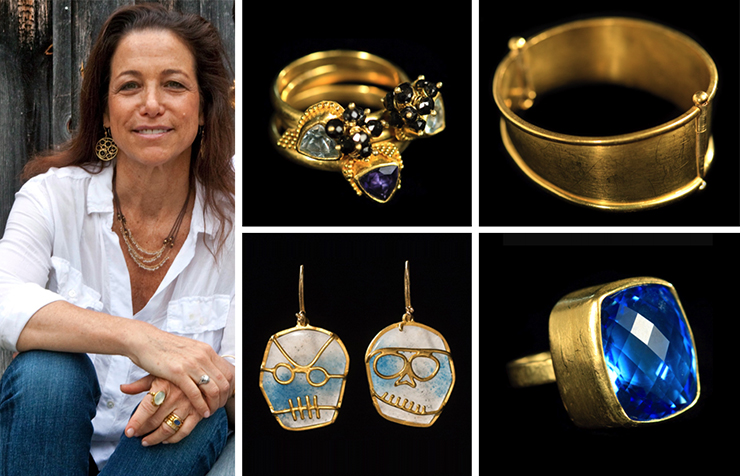
Studio jewelers are notorious for espousing new materials, new techniques, new shapes. Taryn Leavitt? Not so much. This studio jeweler is reinvigorating such time-honored Byzantine, Egyptian, Etruscan, Greek and Roman traditions as stone shaping, bezel settings, chasing and repousse, casting, raising, and forging. She does cabochons and briolettes and has a penchant for yellow gold (“very malleable”), Baroque pearls, and unusually shaped sapphires, aquamarines, tanzanite, tourmaline, and rubies—some of which she obtains on trips to South Africa and India. Her output? Finely detailed shimmering necklaces, bracelets, rings, earrings, cufflinks—and an ear cuff for her daughter. Though everything’s made in the classic tradition, it’s slightly skewed—in tune with modern times. Leavitt’s latest ventures? Skeleton faces, silver dehydrated food slices, and cutlery. Among her tools? Acetylene torch, motorized drilling shaft, saw frame, and files. Some items are made at her kitchen table. More complex pieces emerge at the former ice house on her and her husband’s converted Berkshires farm.
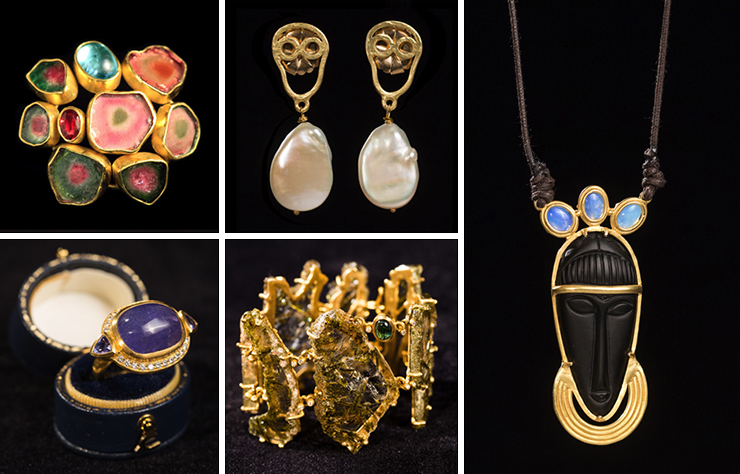
With a grandmother who ran a jewelry shop in Beverly Hills, Leavitt has always had gold, silver and gems in her life. After growing up in Laurelton, she became an on-air news reporter at CNBC, Fox and Channel 9, during which time she also studied for her Masters degree in history and English at NYU. One of her electives was light metal sculpture. It intrigued her, and, over age 40 at the time, she left her 20 year TV career to attend the classically oriented Jewelry Arts Institute. Today, she continues taking workshops there and also studies with the master wax teacher Fred De Vos.
In New York, “there’s always something to see,” says Leavitt, and Tribeca, where she recently moved, is “like a whole new city with its small boutiques, indie restaurants and cobblestone streets.” Work-wise too, New York is essential to her career. She buys gemstones in the Diamond District and does her heavy-duty bench work at a shared studio in Noho, where she avails herself of an industrial drill press, tumbler and large anvils.
Leavitt’s designs are sold at the Museum of Arts and Design, the Rubin Museum and privately. $500-15,000. tarynleavitt.com
. . . . . . . . . . . .
Mary Marino—BOLD!
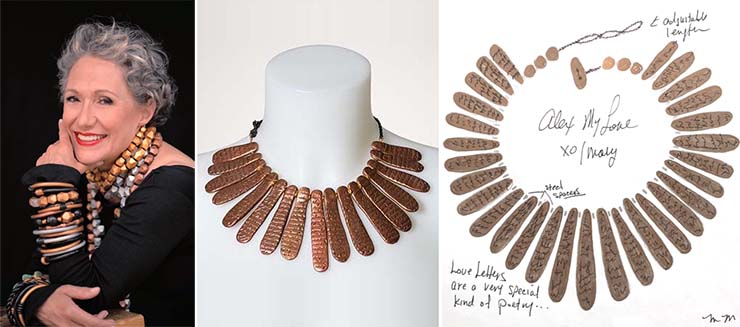
“Delicate and dainty are for flowers,” announces Mary Marino. “If I have to put my glasses on to see jewelry, it’s WAY too small!” Rare among studio jewelers, Marino has her own shop, or rather niche, at a Montclair, New Jersey art gallery. This brings daily access to the “strong women with BIG style” who are her customers. Each Marino take-no-prisoners nugget necklace, each clay and powdered stretch bracelet, though commercially oriented, is bold and unique, conveying a liberated modern sensibility with tribal evocations. “Precious gems don’t interest me at all,” she says. Inspired by Henri Matisse and Freda Kahlo, her preference is for rocks, stones, crystal quartz and hand-cut beads. Her primary technique? Mica powders, sand, and shells mixed into polymer resin—a skill she learned from one of her instructors, Susan Kasson Sloan (herself profiled below).
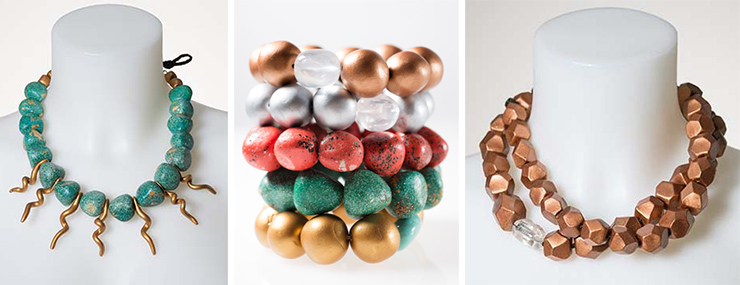
Growing up in Bridgeport, West Virginia, Marino was passionate about jewelry since age three. In a deal made with her coal-industry father, she agreed to attend college—West Virginia University—locally if she could move afterwards to New York. She did, and armed with a second, design degree from FIT began a multi-decade career in the fashion industry—which involved extensive sourcing, buying, and production trips to Turkey, India, Indonesia and Hong Kong, That’s where Marino honed her taste for big, no-nonsense jewelry, while she was at it scooping up beads and charms wherever she went. “I was pretty much a nomad—and I loved it.” Later, for 7 years, she served as design director at Chico’s. And then at age 50, she got married. Deciding at that point to leave her fashion career behind her, she began taking courses at the 92nd Street Y and finally jewelry became her official occupation. A recent move to West Orange has given Marino a full-fledged studio, with a beckoning view of the skyline of New York—a city whose jewelry classes—currently in wax carving—have been a constant, life-changing inspiration.
Mary Marino’s jewelry is sold on Amazon, and on her website Mary Marino Designs.
. . . . . . . . . . . .
Barbara Packer: Intricacies
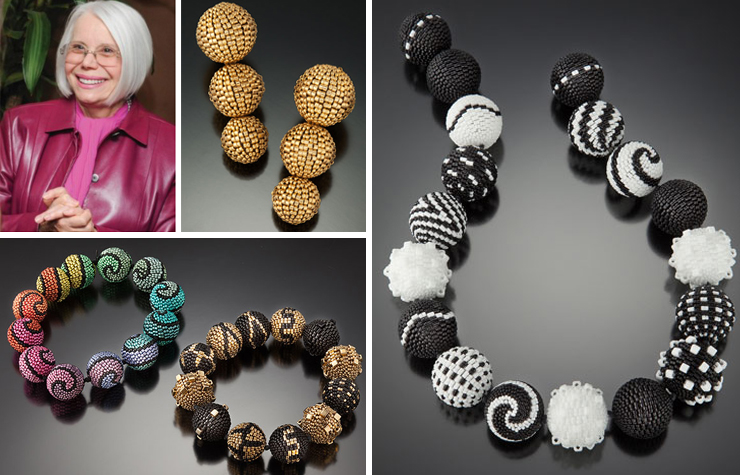
Wielding a needle and thermally bonded thread, Barbara Packer is a bead maker, intently focused on minuscule glass seed beads in thousands of colors, each one plated with 24k gold, sterling silver, palladium or platinum. These she sews over acrylic globes that are less than an inch in circumference, creating a variety of stripe, check and swirl patterns. Such arduous work, performed at Packer’s work room table, is done not with a magnifying glass—too unwieldy—but beneath natural daylight lamps. Bringing out color patterns is her passion, exactitude the name of her game. Her understated jewelry—whimsical yet sophisticated and equally wearable with jeans or couture—functions like a superb perfume: it draws observers close to the wearer’s neck or wrist.
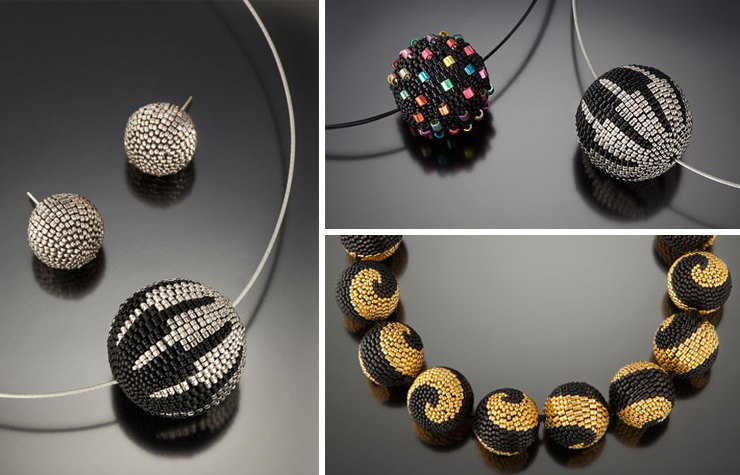
Growing up in Mount Vernon, Packer was intrigued by sewing. Since crafts pursuits back then weren’t considered “intellectual enough,” she focused instead on 18th century English literature, at NYU for her BA and the University of Louisville for her MA. But soon enough, she took color and design courses at FIT and the School of Visual Arts and launched what would be the first of three careers—stitching hundreds of fabric pieces together to form quilts in intricate color patterns. These gained her international recognition. But disillusion set in as Packer discovered that many original quilt designs were being reprinted in magazines without attribution or compensation. So she started researching copyright law—which brought her to law school and a second career, in litigation. Then one day, fixing a broken string of antique trade beads, she got so intrigued that she took a course in beading. That marked the start of her third and current occupation—in which Packer reverts to her earlier fascination with color and pattern.
Now residing in Columbia County, Packer attributes her “exploration of beads, findings, threads, adhesives, etc.” to the many supply stores still extant in the West 30s. She’s also long been involved in the city’s cultural life, taking inspiration from costumes at the opera and ballet. Yet back at home, she finds the time to maintain The Climbery—the world’s largest private clematis collection, located in the sizable garden (dotted with whimsical folk art) that surrounds her home. The Climbery is open to the public, by appointment.
Packer’s jewelry, each piece customized, is sold to private clients and at major juried art and antiques shows. Next up: the Unique by Design trunk show at the Pierre Hotel, October 26-28. $400-4,000. barbarapackerstudios.com
. . . . . . . . . . . .
Susan Kasson Sloan: The Glue that Binds
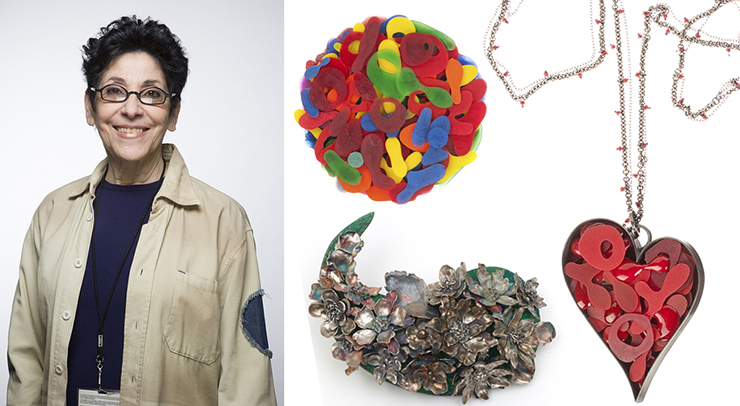
When it comes to inspirations, Susan Kasson Sloan doesn’t mess around. “Pablo Picasso…Mark Rothko…Francis Bacon,” she announces. Fluid, vivid color and dynamic shapes are central to her work. Her material of choice? Epoxy resin. “Glue, essentially—a wonderful medium for color and collage,” says Sloan, noting that it’s been called cold enamel, but enamel requires firing at high temperatures. This moldable fluid, by contrast, is “kitchen table stuff that cures within an hour.” Sloan’s humble equipment? Wax paper and toothpicks, with color and texture achieved, cake-batter style, by mixing in powdered pigments, eyeshadow, gouache, gold leaf, glitter, etc. After 25 years experimenting with this resin, she is sure she has yet to reach its limits. She’s also become expert in Precious Metal Clay. Made of fine silver particles, it retains its shape when oven-fired.
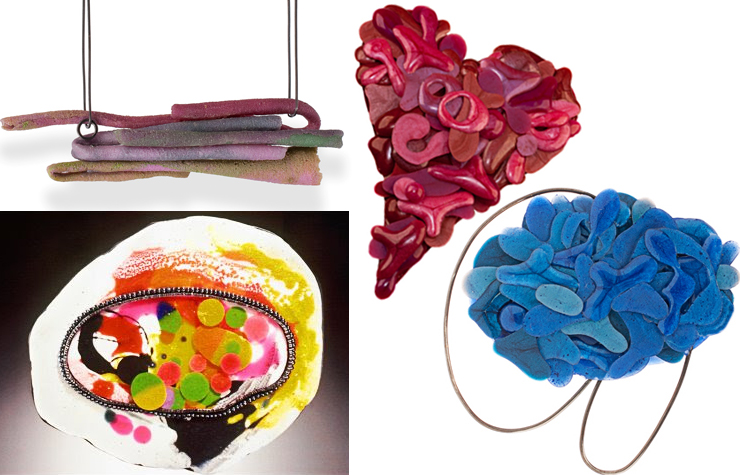
It was while growing up in East New York, Brooklyn, that Sloan developed a lifelong passion both for painting and for metalwork, which was nurtured first at the High School of Music and Art and Queens College, then at the 92nd Street Y, where she took jewelry classes. Robert Ebendorf, her mentor there and a leading figure in the American crafts movement, was so impressed with Sloan’s mastery of shapes and forms that he asked her to co-teach a class with him. By the mid-‘80s, word got around about epoxy resin and its rich, saturated color range—and Sloan was hooked. Here was an obliging new jewelry language, allowing her to be both a painter and a metalworker—making silver molds to contain the runny resin. Over the years, Sloan has taught workshops at Penland, Haystack and other notable venues around the country. She continues teaching at the Y and also at the Art School at Old Church in Demarest. Her work is in the collections of the Victoria & Albert Museum, the Renwick Gallery and the Racine Museum of Art.
Living in suburban Washington Township, New Jersey, where she works out of her sunny townhouse studio, Sloan values New York as one of the world’s great resources for the art museums and the art books that continually inform her work.
Her pieces are sold privately. $200-2,000. susankassonsloan.com
. . . . . . . . . . . .
Katrin Zimmermann: Extreme Minimalism
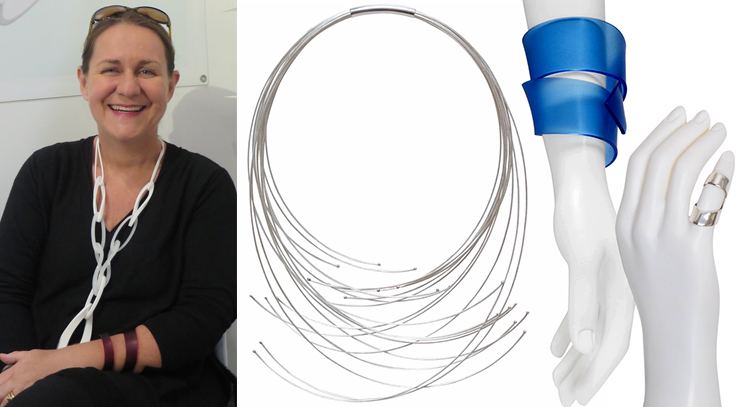
“My jewelry is about reduction. I’m as much of a purist as you can find, constantly stripping away, reducing objects to their essential quality.” So says Katrin Zimmermann, whose show-stopping Calder-esque neck-, wrist-, ear- and finger-pieces have been worn by a wide range of notables—including the late Zaha Hadid, Keith Richards, General Norman Schwarzkopf, and Rita Moreno. Her materials? Sterling silver wire, odds and ends from industrial closeouts, acrylic tubing—which she sometimes gold-plates. The precious vs. non-precious contrast intrigues Zimmermann. So does Zen-like asymmetry, as in her free floating cable neckpieces, her off-kilter collarbone loop necklaces, her ribbon-like cuffs spiraling up the forearm. True to her minimalist sensibility, Zimmermann avoids clasps or closures, making jewelry that almost magically closes itself. Starting her designs using Illustrator software, she subcontracts the heavy-duty soldering, laser cutting, and cable-making. And then, wielding drills and heat (in the same industrial oven she uses for cooking) until the pieces “are as soft as fabric,” she molds and twirls them into their final form.
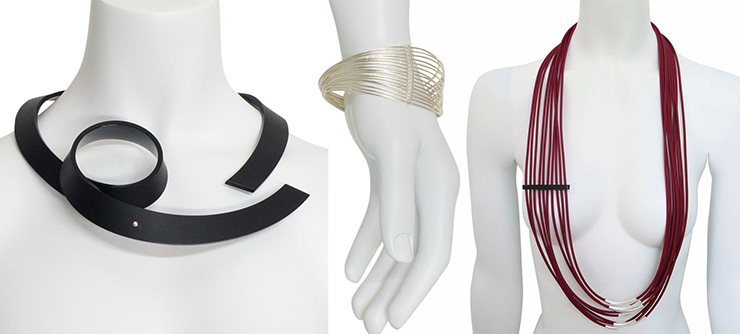
Raised in Germany’s Black Forest, Zimmermann studied art and archaeology at London’s School of Oriental and African Studies before spending two years in China and then exploring various other traditional and modern cultures. She arrived in New York on vacation in 1991 and “absolutely loved it.” Friends urged her to study art here; attracted by the city’s extraordinary energy and diversity,” she enrolled in a jewelry-making program at FIT. Soon she was selling at Fragments, the influential Soho jewelry showroom-boutique. Today, she continues molding and twirling at her home studio in what had been “the shell of a Harlem townhouse.” She also teaches a senior jewelry seminar at Pratt.
For Zimmermann, New York is a constant source of creative input. Not as much of a self-described “flaneur” as she used to be, she still trolls “Canal Street, looking for outlets with closeouts.” The city’s diversity is extremely important to her. “When you’ve lived everywhere else in the world, New York becomes one of the few places where you can be who you are. Differences are welcomed here.”
Zimmerman’s jewelry is sold at numerous museum shops, including the Louvre’s. $90-$1,800. exovo.com
Linda Dyett’s articles on fashion, beauty, health, home design, and architecture have appeared in The New York Times, Washington Post, Monocle, Afar, New York magazine, Allure, Travel & Leisure, and many other publications.
. . . . . . . . . . . .
You may enjoy other NYCitywoman articles by Linda Dyett: Turning Antique Lace into Silver and Gold; Tips from a Top NYC Hair Colorist; A Makeup Update for Mature Faces; Custom-Made Womenswear; Don’t Retire—Reboot, Part 1; Don’t Retire—Reboot, Part 2; and Don’t Retire—Reboot, Part 3.
. . . . . . . . . . . .









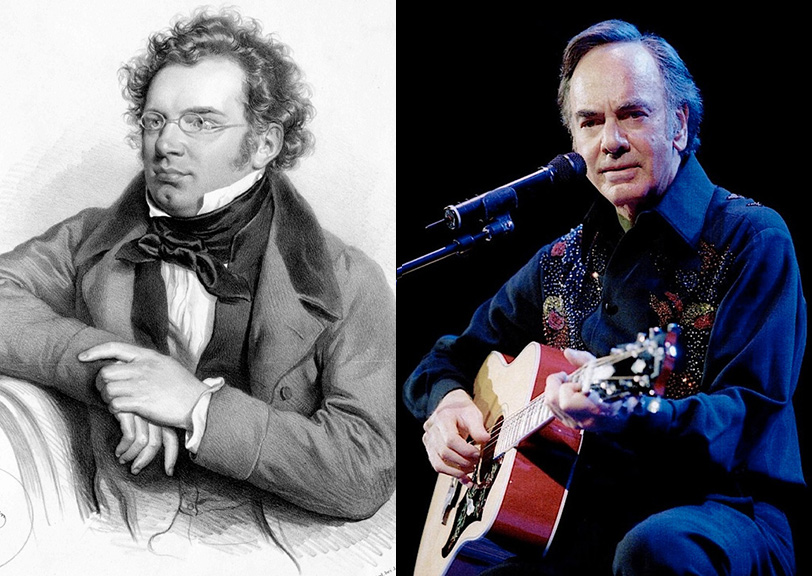
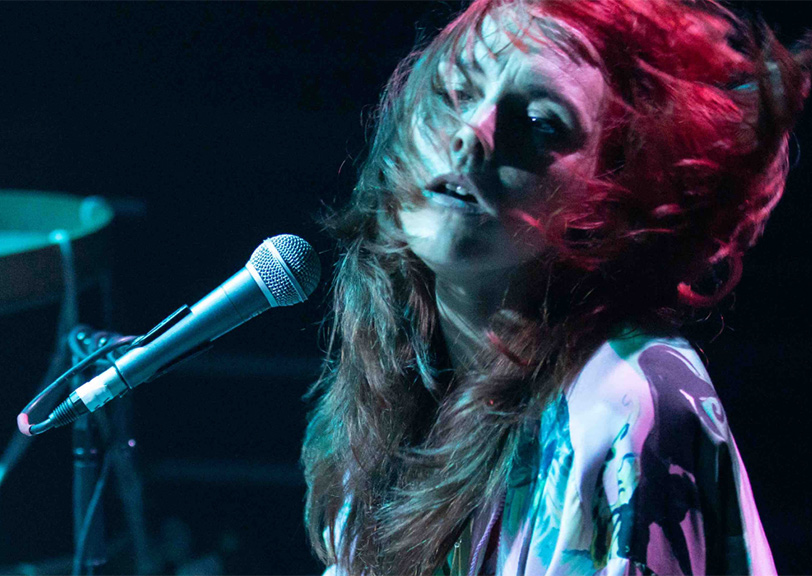
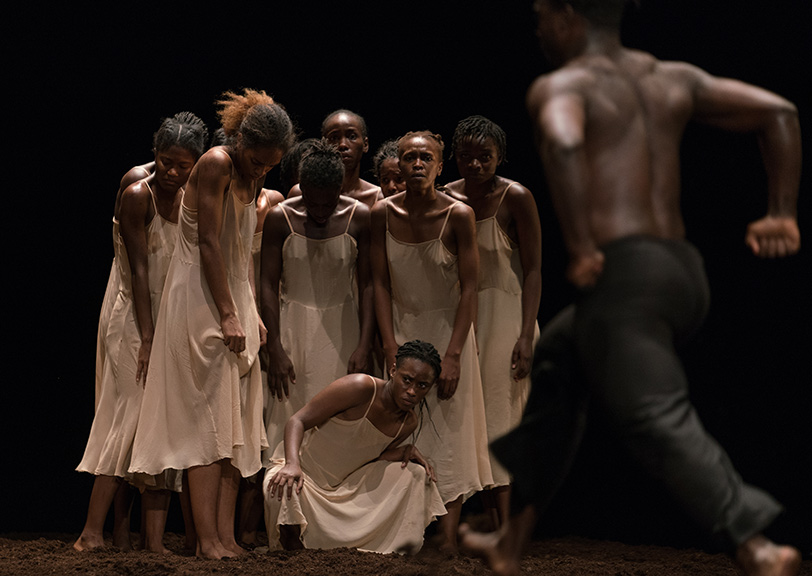
June 6th, 2017 at 9:37 am
Wonderful wearable art…who needs Tiffany’s?